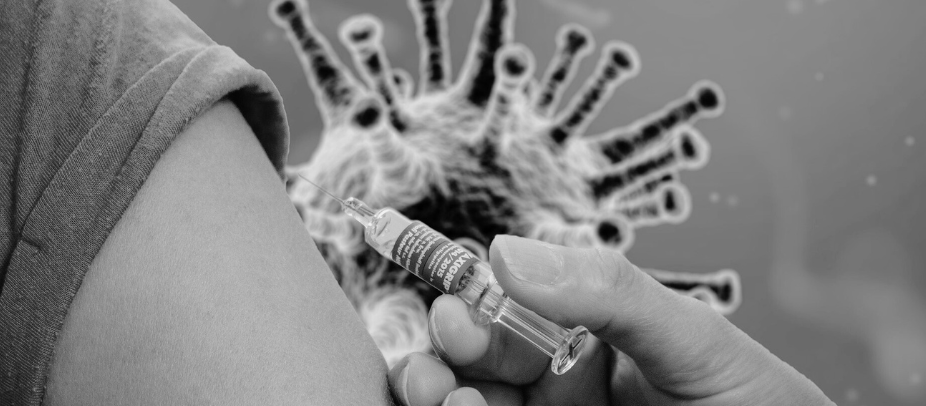Part 2 in a series of 6 blogs navigating the issues around vaccinations

Human bodies are fearfully and wonderfully made, the truly awesome handiwork of our sovereign creator God. They are beautiful in their complexity and design.
Of all the ‘systems’ in the human body, the immune system is arguably one of the most diverse and intriguing. It uses multiple defence strategies to fight off infection and keep disease under control. It consists of seemingly unrelated structures like white blood cells, antibodies, lymph nodes and channels, and bone marrow, as well as distantly located organs like the skin, tonsils, spleen and thymus. Together these work like an army and an audit system. Besides barriers to invasion, like the skin, the immune system has an army of different white blood cells that are trained in surveillance to monitor, capture and destroy foreign microbes and toxins. There’s an excellent video on YouTube to explain how this works. https://www.youtube.com/watch?v=PzunOgYHeyg
White blood cells move around the body, monitoring the body, launching an attack, and capturing any invaders. They also keep a record of invasions. When a microbe enters the body, the immune system works out how to defeat it, and records the victory. At every subsequent attack, the immune system destroys the microbe before it can multiply and make a person sick. It does this using antibodies created by specific white blood cells called B-Lymphocytes. The antibodies recognise the microbes by detecting molecules (antigens) on the microbe surface, or other substances that the microbes produce. They then attach themselves to the microbe and mark them for destruction. The microbe becomes trapped by the lymphatic system and is eventually removed from the blood by organs like the spleen.
At the same time, the thymus produces another type of white blood cell, called T-lymphocytes. These cells find and destroy all of the body cells that are still infected with the microbe.
Sometimes the immune system becomes zealously over-active, leading to allergic reactions like hay fever and asthma, or auto-immune diseases like rheumatoid arthritis and multiple sclerosis. When the immune system is under-active, we refer to it as immune-suppressed or immune-compromised. An under-active immune system might be inherited from our parents, or it might develop because of diseases like cancer and/or medication such as corticosteroids and chemotherapy. The effect of this, obviously, is to reduce the body’s ability to respond to an infection. People who are immune-suppressed need to try to protect themselves from possible infections. Herd immunity (See Part 1 here) is an important protection for these people.
Fearfully and wonderfully made, indeed. And also affected by the introduction of sin and death into the world.
The impact of vaccines on alleviating the burden of this disease, and many others, cannot be overestimated.
Read Blog 1 in the series here
Read Blog 3 in the series here
Read Blog 4 in the series here
Read Blog 5 in the series here
Read Blog 6 in the series here
The gospel announces the ultimate healing for disease and death and sin, through the work of Jesus Christ. But God, in his grace, also — and often — provides healing through the good gifts of medical science. James (1:17) reminds us that: “Every good and perfect gift is from above, coming down from the Father of the heavenly lights, who does not change like shifting shadows.” Vaccines are a modern-day medical success. Their development is arguably one of the great achievements in healthcare. Vaccines copy and harness our body’s God-given innate ability to fight sickness.
Vaccines introduce a microbe, or part of it, in a small but sufficient quantity for white blood cells to recognise it and create antibodies. Once the body records the invasion in this way and when the antibodies are made, it is prepared to defend subsequent invasions. You can read our previous post for a more detailed discussion about how vaccines work (See Part 1 here)
History records entire population groups and civilisations devastated by viral pandemics. Smallpox, for example, is linked to the death of the Aztecs during their conquest by the Spanish explorers. It’s also linked to the death of up to 70% of the Aboriginal population of the area around Sydney Cove during an outbreak in 1789. The disease had little or no impact on white settlers who had been exposed to smallpox in Europe.
Modern vaccine development began with Edward Jenner in the late 18th century who had the idea of stopping smallpox by exposing people to cowpox (read more here). In fact, the word ‘vaccine’ comes from vacca, Latin for ‘cow’.
The impact of vaccines on alleviating the burden of this disease, and many others, cannot be overestimated. Countries with successful immunisation programs are rewarded with improved quality of life, and healthcare cost savings amounting to billions of dollars each year. The eradication of smallpox and the near eradication of polio are just two out of many examples where suffering, disability and death has been decreased through the introduction of immunisation programs. In the Australian context, the Australian Institute of Health and Welfare 2019 report on The Burden Of Vaccine Preventable Diseases In Australia Health (summarised here) provides a detailed analysis of the impact of Australia’s immunisation programs. It’s estimated that there has been a 31% decrease in the burden of disease from 2005 to 2015.
If this is the case, why do we still use vaccines for diseases that are considered eradicated or near-eradicated?
Vaccines copy and harness our body’s God-given innate ability to fight sickness.
Vaccination programs for diseases that are considered eradicated or near-eradicated are still required because of the principle that underpins herd immunity. Movement and the social behaviour of people has an impact on community immunity. As long as the disease exists in some part of the world, near-eradicated diseases can still circulate, and there is still a need to protect the community especially children, the elderly and those who are immunosuppressed.
Furthermore, some diseases are highly contagious and require almost 95% of the population to have immunity through vaccination in order to limit its spread to the vulnerable. Polio, for example, was reported in 1979 to be eradicated in the USA due to an aggressive immunisation program. More recently, however, it was discovered that a large number of people in the USA still carry the virus due to community pockets that resisted the 1970s immunisation program.
Our immune system is a wonderful provision of God; we would not survive without it. God has also given us insight into how we can help the immune system work more effectively and deal with some of the diseases it encounters only occasionally. Our immunity however is not an individual exercise but one that is built not only on a history of human innovation but also on a collaborative community effort. It takes continual effort from public health authorities to maintain the protection from which we all benefit, including those communities that are least able to help themselves (read more here).
*The author, Nalini Pather, is a senior academic in medical sciences at the University of NSW. She holds a doctoral degree in cell biology and additional postgraduate qualifications in clinical anatomy, and university learning and teaching. Her areas of research include applied anatomy and medical imaging, medical education and ethics. Nalini serves on the Gospel, Society and Culture committee.
Read part 3 in the series here
Our immunity however is not an individual exercise but one that is built … also on a collaborative community effort.
